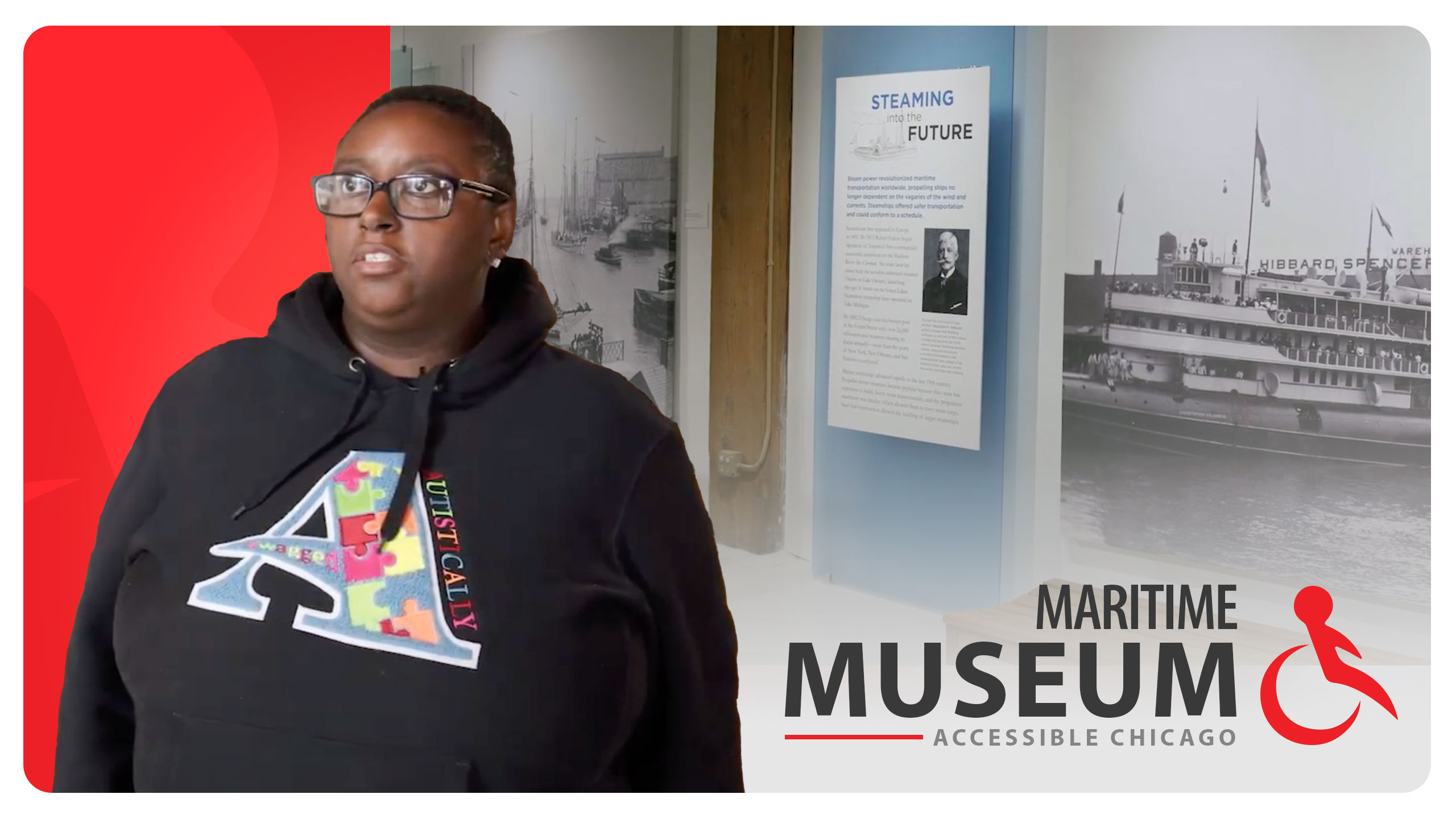
Join Madeline Crispell, curator of the Chicago Maritime Museum, and Victoria Boateng, a sub autism advocate and musician, on a fascinating journey through Chicago’s rich maritime history! In this video, Madeline and Victoria explore the exhibits at the Chicago Maritime Museum, delving into the construction of birch bark canoes, learning about the city’s ties to the Great Lakes and the Mississippi River, and uncovering intriguing stories about Chicago’s past, including insights into the Chicago Fire. Don’t miss out on this opportunity to dive into the captivating world of Chicago’s maritime heritage.
(Música brillante)
MADELINE: Soy Madeline Crispell, y soy la curadora del Museo Marítimo de Chicago. Aquí en el Museo Marítimo de Chicago, en el nivel del río del Bridgeport Art Center. El Bridgeport Art Center está en Racine y la 35th, justo en las orillas de Bubbly Creek. Este museo, donde estamos ahora mismo, abrió en 2016, pero el Museo Marítimo de Chicago tiene raíces más profundas en la ciudad. Fue fundado por primera vez como la Sociedad Marítima de Chicago en 1982. Somos bastante accesibles si vienes en coche. Hay un estacionamiento gratuito justo arriba, afuera del museo. Somos accesibles desde la línea roja o la línea naranja. Solo tienes que subirte al tren y luego tomar un autobús que te lleva directamente al museo; las paradas están en Racine, justo afuera. Puedes encontrar mucha más información, direcciones para conducir y direcciones de tránsito desde cualquier dirección en la que vengas en nuestro sitio web. Creemos que es importante contar la historia de Chicago a través de sus vías fluviales. Chicago está donde está hoy, Chicago es la ciudad que es hoy, debido a su posición entre los Grandes Lagos y el río Mississippi. Y así queremos empoderar a la gente de Chicago para que comprendan su propia historia, pero también mostrar esta historia a personas de todo el mundo que puedan estar interesadas en ella.
MADELINE: Hola, Victoria. Bienvenida al Museo Marítimo de Chicago. Soy Madeline. Soy la curadora del museo, y hoy te daré una visita guiada.
VICTORIA: Genial. Vamos.
MADELINE: Vamos a empezar.
VICTORIA: Mi nombre es Victoria Boateng. Soy una defensora del autismo. Enseño tambores de África Occidental para personas con discapacidades o autismo y también actúo con varios artistas y músicos. Creo que es una exhibición maravillosa. Aprendí mucho sobre Chicago, especialmente que Chicago tiene tanta historia de la que era muy ingenua. Así que, básicamente, solo pude aprender sobre las canoas, las cuerdas, los barcos y nuestra historia sobre el incendio de Chicago, que fue muy interesante para mí. Era muy nuevo para mí, así que muy emocionada de aprender sobre esto.
MADELINE: Justo aquí, tenemos una pequeña exhibición que explica la construcción de la canoa de corteza de abedul. Así que si quieres sentir cómo se siente la corteza de abedul, cómo se sienten los amarres, cómo se siente el cedro, te da una idea de los materiales que se utilizan en una canoa como esta. Creo que es especialmente importante que los museos sean lo más inclusivos posible. Aquí es donde vive nuestra historia. La historia pertenece a todos y si no puedes acceder a un espacio, no puedes acceder a esa historia. Y por eso creemos que esta es una historia lo suficientemente importante como para que todos en Chicago, cualquier visitante que venga, debería poder escucharla. Estoy muy contenta de que todos nuestros videos en la galería estén subtitulados y de que seamos completamente accesibles físicamente. Estamos en un solo piso, lo que facilita mucho moverse. También puedes encontrar en nuestro sitio web una visita guiada en video del museo. Así que si quieres ver eso, puedes tener una idea de cómo es el espacio antes de venir en persona. Aquí en el museo consideramos que es un desafío continuo siempre mejorar la accesibilidad de nuestro espacio.
VICTORIA: Cuando llegué, todos fueron muy amables, fácil de entrar. Así que creo que sería muy accesible para personas con discapacidades, especialmente discapacidades físicas, discapacidades mentales, cualquiera es bienvenido. Bueno, creo que todos deberían estar incluidos. No importa si tienes una discapacidad o no, se trata de unir a todos, se trata de unidad. Y todos queremos aprender sobre la historia y de dónde viene. Y esa es la parte más importante.

Recent Comments